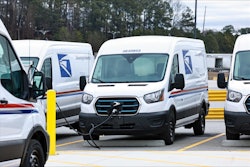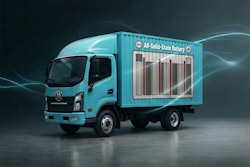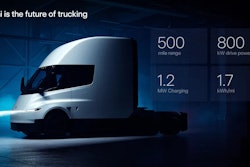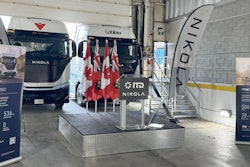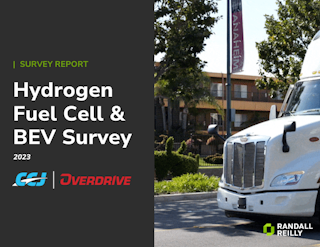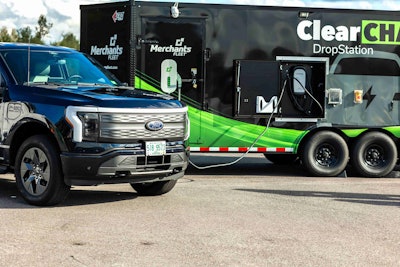
The perceived slowdown in the adoption of electric vehicles (EVs) in North America doesn't mean fleets should pause, slow down or abandon their fleet electrification plans. On the contrary, this is the time to start planning, piloting and maturing a long-term conversion strategy to fleet electrification. With new regulations requiring the use of EVs coming into effect in the next few years, and states such as California, Colorado, Massachusetts, and at least 10 others looking to phase out internal combustion engines, now is the time to evaluate EVs and consider the many factors of incorporating EVs into your fleet operations.
The cost-effectiveness of EV fleets
Analyses comparing EVs with equivalent internal combustion engine (ICE) vehicles have shown that EV fleets are generally more cost-effective. This conclusion arises from comparing annual mileage, maintenance, financing options, and other operational factors. While the upfront costs of EVs are higher, they tend to break even within a few months to a few years. However, this is fleet and utilization dependent, so the analysis process can get complicated quickly. Be sure to collaborate with a partner who is capable of providing sophisticated analysis to ensure cost-effectiveness for your unique business case.
Impact on end-user costs
There may be concerns about the cost impact on end-users when adopting EV Fleets, however, EVs offer pathways for fleets to optimize costs through lower operating overhead and maintenance expenses, as well as the ability to control fuel costs — all of which result in significantly lower operational costs over the long term.
Sophisticated fleets who adopt a long-term view to optimize operations may even be able to "fix" their electric fueling expense through unique power purchase or "service" based agreements with infrastructure partners. EVs are inherently connected vehicles, so using tools like TotalConnect through Merchants will allow fleets unprecedented access to real time fleet operational data, thereby helping ongoing operational optimization. Just as leveraging the real time use of telematics and data analytics are critical to optimizing EV fleet operations, ongoing strategic planning, and lowering or locking in electric fueling costs are also essential to successfully managing fleet efficiency and subsequently impacting end-user costs.
Infrastructure collaboration
The most critical aspect of transitioning to an electric fleet is fully understanding the charging infrastructure and planning for upgrades. Historical fleet operational data is crucial in establishing a baseline for charging infrastructure needs. In contrast, telematics plays an ongoing role in determining and optimizing infrastructure operations to support current needs. Telematics data from connected EVs can identify high-density operational areas, clusters of vehicles requiring fast charging, helping to manage energy flow and associated demand charges, managing overall electrical load and when regulations permit doing so, even exchanging energy back to the grid for ancillary revenue streams for the fleet operator. This data forms the basis for collaboration between fleet operators, infrastructure providers, and utilities, ensuring not just the strategic placement of EV charging stations but also ongoing charging station operation.
Innovations in the EV & supporting technology ecosystem
Technological advancements are transforming fleet operations with innovations like predictive maintenance, which leverages data from on-vehicle systems and sensors for proactive maintenance, significantly reducing downtime. We already see situations where vehicles are remotely diagnosed and fault conditions decoded – thereby reducing vehicle downtime in the maintenance bay. Recently, we explored a route optimization software tool that would increase vehicle utilization and predict when and where to charge – helping to refine how, when, and where a vehicle needs to be positioned to save time and fuel. It is clear that the future of fleets, especially electric fleets, will be data-driven, and having an operational foundation built on data will help with ongoing operations optimization to achieve cost-efficiency.
Current and future EV infrastructure
In North America, except for the Tesla Supercharger network, public charging is not where it needs to be – in terms of concentration, accessibility, and reliability. The good news is that starting as soon as 2025, most charging manufacturers who operate in the public charging space will have to support vehicles that adopt the Tesla North American Charging Standard (NACS) standard. This unification of standards in North America will significantly boost access to on-route charging. Nearly every OEM has committed to releasing vehicles that will adopt NACS. Further good news is that the Society of Automotive Engineers (SAE) has rapidly matured the NACS standard, with a good amount of future proofing built in – thereby setting a solid foundation for harmonizing charging. Additionally, there will be backward compatibility through adapters supporting vehicles already on the road today. Fleet managers should be aware of these industry trends as they play a crucial role in decision making and strategy definition towards fleet electrification and vehicle choices.
The future of fleet operation has electric vehicles as an integral part of the transportation landscape. But to what level and how fast the adoption will happen are impacted by a multitude of factors – everything from macroeconomic factors to vehicle and infrastructure availability. The journey towards electrification, marked by collaboration, innovation, and strategic planning, heralds a new era in fleet management.
Fleet managers can effectively navigate the transition to electric vehicle fleets, ensuring operational efficiency, cost-effectiveness, and environmental compliance by being fully tuned in to the evolving technologies and tapping a trusted partner to help in this journey. The time to get engaged and start planning is now.



